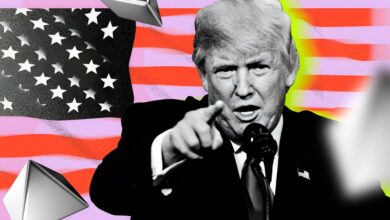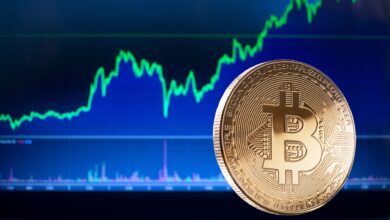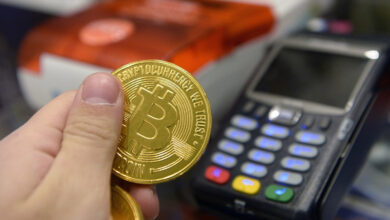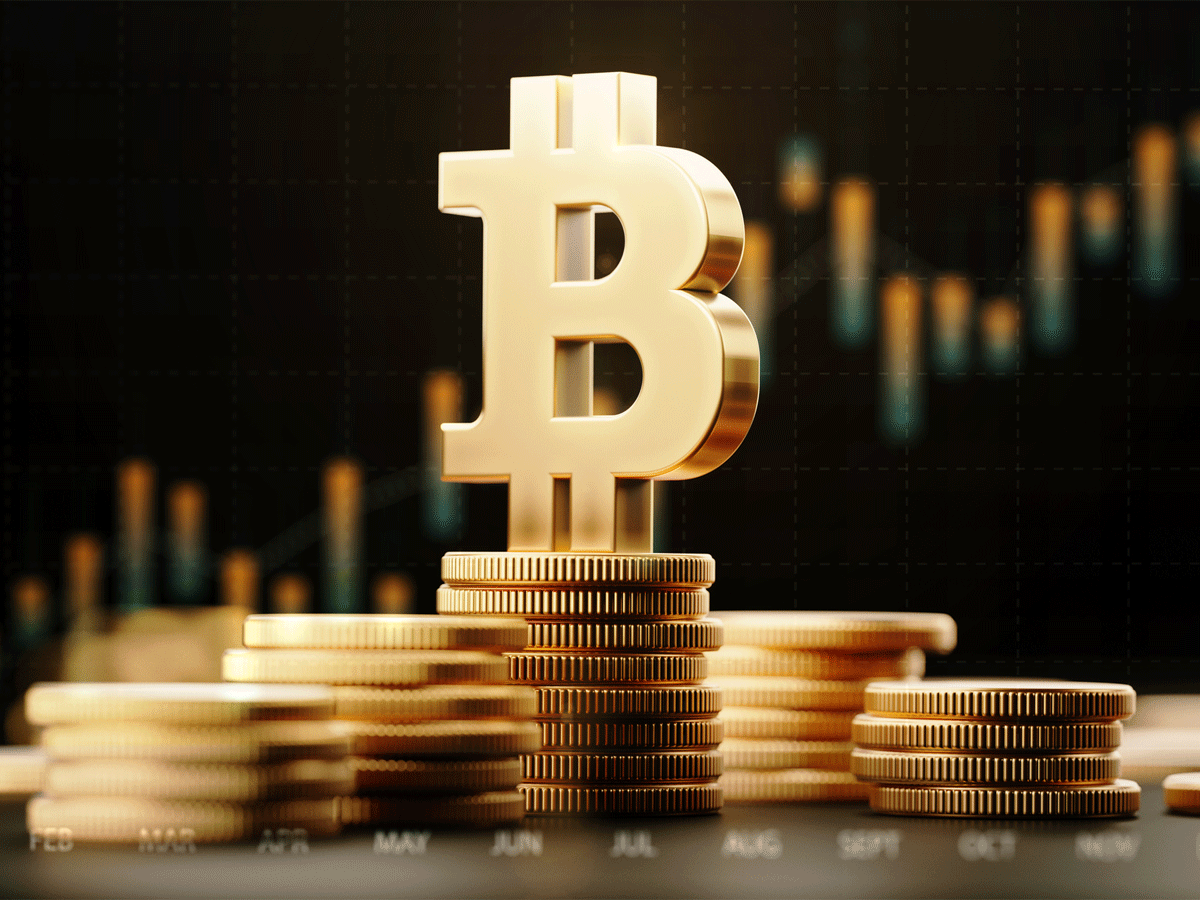
Bitcoin vs Gold News Comparison 2025 Which Asset Wins the Investment Battle
The ongoing Bitcoin vs gold news comparison has reached a fascinating turning point in 2025, with both assets delivering unexpected performances that have surprised even seasoned investors. Recent financial news reveals a dramatic shift in the traditional relationship between these two store-of-value assets. While gold has surged nearly 30% year-to-date, reaching record highs above $3,500 per ounce, Bitcoin has shown more modest gains of approximately 4%, trading near $98,000.
This divergence marks a significant change from their historically correlated movements, making the Bitcoin vs gold news comparison more relevant than ever for investors seeking to understand which asset deserves a place in their portfolios during these uncertain economic times.
Latest Bitcoin vs Gold News Comparison: 2025 Performance Analysis
The financial landscape of 2025 has been marked by unprecedented developments in both Bitcoin and gold markets. Gold has vastly outperformed Bitcoin in 2025, with gold up 30% and now trading at all-time highs, while Bitcoin has experienced more volatility and modest growth. This performance divergence has caught many analysts by surprise, given the historically correlated nature of these alternative assets.
Gold carried its momentum into 2025, with its price surging above the $3,000 mark in March for the first time in history, reaching spot prices that hit an intraday peak of $3,167.57 on March 28. This represents the 18th record high of the year, driven by safe-haven demand and macroeconomic tensions that have plagued global markets throughout the year.
Meanwhile, Bitcoin’s performance has been influenced by several factors including regulatory developments, institutional adoption, and changing market sentiment. The cryptocurrency has shown resilience despite facing headwinds from traditional financial markets and regulatory uncertainty that continues to create volatility in the digital asset space.
The key driver behind gold’s exceptional performance has been the increasing uncertainty in global trade policies and monetary conditions. Investors have flocked to traditional safe-haven assets as concerns about inflation, currency debasement, and geopolitical tensions have intensified throughout 2025.
ETF Market Dynamics Shape the Comparison
The ETF market has become a crucial battlefield in the Bitcoin vs gold investment narrative. As of early August 2025, gold ETFs represent approximately $325 billion in assets under management, while bitcoin ETFs have surged to $162 billion. This represents significant growth for Bitcoin ETFs, particularly following the successful launch of US spot bitcoin ETFs that have attracted substantial institutional interest.
The combined value of Bitcoin and gold ETFs has broken the half-trillion-dollar barrier, demonstrating the massive institutional interest in both assets. This development has significant implications for retail investors who can now access both assets through traditional brokerage accounts without the complexities of direct ownership.
The ETF structure has democratized access to both assets, allowing investors to gain exposure without dealing with storage concerns for gold or security issues associated with holding Bitcoin directly. This accessibility has contributed to increased investment flows into both asset classes throughout 2025.
Institutional Adoption Trends
Institutional adoption continues to be a key driver in the Bitcoin vs gold debate, though the approaches differ significantly. MicroStrategy holds 553,555 bitcoins, acquired at an average price of $68,459, totaling approximately $37.9 billion. This massive corporate holding demonstrates the confidence some institutions have in Bitcoin as a treasury asset and strategic reserve.
BlackRock’s involvement in Bitcoin ETFs has also added legitimacy to the cryptocurrency space, bringing the world’s largest asset manager into the digital currency ecosystem. Their expertise in traditional asset management has helped bridge the gap between conventional finance and cryptocurrency markets.
Traditional gold investments continue to attract conservative institutional money seeking stable returns during economic uncertainty. Central banks worldwide have continued their gold purchasing programs, adding to the fundamental demand that supports gold’s price performance in 2025.
Economic Factors Driving the Bitcoin vs Gold News Comparison

The macroeconomic environment of 2025 has created unique conditions that favor both assets for different reasons. The U.S. Dollar Index has declined 8% year to date amid worrisome trade and fiscal policy decisions, leading some investors to diversify into gold and Bitcoin as alternative stores of value.
Several key economic factors are shaping the current investment landscape and influencing the relative performance of these assets. The Federal Reserve’s monetary policy stance continues to influence both markets, with expectations of rate cuts from the current 5.25% to approximately 3.25% by early 2026. This anticipated easing makes non-yielding assets like gold and Bitcoin increasingly attractive to investors seeking alternatives to traditional fixed-income securities.
Inflation concerns remain elevated despite central bank efforts to control price growth. Both assets are being evaluated as inflation hedges, though their effectiveness varies significantly. Gold has traditionally served this role effectively over decades, while Bitcoin’s track record as an inflation hedge remains shorter and more volatile, creating ongoing debate about its utility in this capacity.
Currency debasement concerns have intensified as U.S. debt levels continue rising, now exceeding $35 trillion. This has created widespread concerns about long-term currency stability, pushing both institutional and retail investors toward hard assets that can preserve purchasing power over time.
Trade Policy and Global Uncertainty
The key catalyst for 2025’s market dynamics was U.S. President Donald Trump’s tariff announcements, which triggered widespread fears of a global trade war. These policy measures have increased demand for safe-haven assets, though gold has benefited more significantly than Bitcoin from this trend, reflecting investors’ preference for traditional safe havens during periods of heightened uncertainty.
The ongoing trade tensions have created a complex investment environment where traditional correlations between assets are breaking down. This has made the Bitcoin vs gold comparison more nuanced than in previous years, as each asset responds differently to various market stressors and policy announcements.
Geopolitical tensions beyond trade policy have also influenced market dynamics, with regional conflicts and diplomatic uncertainties adding to the overall risk environment that typically favors gold over more speculative assets like Bitcoin.
Technical Analysis and Market Sentiment
The technical landscape for both assets reveals interesting patterns that inform the ongoing Bitcoin vs gold news comparison. From November 2022 to November 2024, gold and bitcoin moved in lockstep, displaying strong positive correlation that suggested investors viewed them as similar alternative assets. However, this relationship has broken down significantly in 2025, with gold climbing 16% while bitcoin dropped by more than 6% during the first quarter.
This decoupling represents a significant shift in market dynamics and suggests that investors are treating these assets differently based on their unique characteristics and risk profiles. The breakdown in correlation indicates that different factors are now driving performance for each asset class.
Market sentiment analysis reveals diverging investor attitudes toward the two assets. Gold sentiment has been buoyed by traditional safe-haven demand and central bank purchasing, while Bitcoin sentiment has been more influenced by regulatory developments, technological progress, and changing institutional adoption patterns.
Volatility Patterns and Risk Assessment
Bitcoin continues to exhibit significantly higher volatility compared to gold, which appeals to different investor profiles and risk tolerances. Risk-tolerant investors may prefer Bitcoin’s potential for higher returns, accepting the accompanying volatility, while conservative investors gravitate toward gold’s historical stability and predictable performance patterns.
The volatility difference has become more pronounced in 2025, with gold demonstrating more consistent upward movement while Bitcoin experiences larger price swings that can create both opportunities and risks for investors. This volatility differential has implications for portfolio construction and risk management strategies.
Gold’s lower volatility makes it more suitable for capital preservation strategies, while Bitcoin’s higher volatility appeals to investors seeking growth potential despite increased risk exposure. Understanding these risk characteristics is crucial for appropriate asset allocation decisions.
Market Sentiment Indicators
Social media sentiment, Google search trends, and institutional investment flows all contribute to market dynamics and provide insights into investor psychology. Gold has benefited from increased mainstream media coverage of economic uncertainty and inflation concerns, while Bitcoin sentiment has been influenced by regulatory developments and technological progress in the cryptocurrency space.
The sentiment divergence reflects broader investor attitudes toward traditional versus digital assets. Gold sentiment remains supported by its long history and established role in investment portfolios, while Bitcoin sentiment can be more volatile and subject to rapid changes based on regulatory news or technological developments.
Investment Strategies: Portfolio Allocation Considerations

Modern portfolio theory suggests that both Bitcoin and gold can play complementary roles in a diversified investment strategy, though their optimal allocation depends on individual investor circumstances and market conditions. The key is understanding how each asset fits into an overall investment thesis and risk management framework.
Traditional allocation models typically recommend conservative investors allocate 5-10% of their portfolio to gold as a hedge against economic uncertainty and inflation. This allocation has historical precedent and reflects gold’s established role as a portfolio diversifier and store of value during turbulent market conditions.
Bitcoin allocation recommendations vary more widely among financial advisors and investment professionals. Some experts suggest 1-5% for conservative investors who want exposure to digital assets, while others recommend up to 10-20% for more aggressive portfolios seeking higher growth potential despite increased volatility.
Risk management approaches differ significantly between the assets due to their different volatility profiles and market behaviors. Gold’s lower volatility makes it suitable for capital preservation strategies, while Bitcoin’s growth potential appeals to investors seeking higher returns despite increased risk exposure.
Dollar-Cost Averaging Strategies
Regular investment strategies can help smooth out the volatility inherent in both markets, particularly for Bitcoin which exhibits much higher price fluctuations. Dollar-cost averaging into both gold and Bitcoin can reduce timing risk and take advantage of market fluctuations over extended time periods.
This systematic approach is particularly relevant given the current market dynamics where both assets experience different volatility patterns and may benefit from consistent, disciplined investment approaches rather than trying to time market movements.
The effectiveness of dollar-cost averaging varies between the assets, with Bitcoin’s higher volatility potentially providing more opportunities to accumulate shares at lower prices, while gold’s steadier appreciation may benefit from consistent accumulation over time.
Regulatory Environment and Future Outlook
The regulatory landscape continues to evolve for both assets, though in fundamentally different ways that reflect their distinct characteristics and market positions. Gold faces minimal regulatory risk due to its long history as a recognized store of value and its established place in the global financial system.
Bitcoin operates in a more dynamic regulatory environment that can significantly impact its price and adoption rates. Government acceptance of Bitcoin as a strategic reserve asset could drive significant price appreciation, while regulatory restrictions could limit its growth potential. Several states and companies are considering or have already implemented Bitcoin treasury strategies.
The regulatory trajectory for Bitcoin remains uncertain but is gradually becoming more favorable as governments and regulatory bodies develop clearer frameworks for digital asset oversight. This regulatory clarification could reduce some of the uncertainty that has contributed to Bitcoin’s underperformance relative to gold in 2025.
Gold market stability benefits from established infrastructure, clear regulatory frameworks, and widespread acceptance among traditional financial institutions. These advantages provide gold with regulatory certainty that Bitcoin currently lacks, contributing to its appeal among conservative investors.
Global Adoption Trends
International adoption patterns differ significantly for both assets, reflecting their distinct characteristics and regional preferences. Gold maintains universal acceptance as a store of value across cultures and economic systems, providing it with a stable global market regardless of local economic conditions.
Bitcoin adoption varies significantly by jurisdiction and regulatory approach, with some countries embracing digital currencies while others maintain restrictive policies. This uneven adoption pattern creates opportunities and risks that investors must consider when evaluating Bitcoin’s long-term prospects.
Emerging markets may favor different assets based on their unique economic conditions, currency stability, and technological infrastructure. Countries with unstable currencies may show greater interest in both assets as alternatives to their local currency, though gold typically has broader acceptance.
Practical Investment Considerations
When evaluating the Bitcoin vs gold news comparison for practical investment decisions, several operational factors require careful consideration beyond just performance potential. These practical aspects can significantly impact the overall investment experience and returns.
Storage and security considerations differ dramatically between the assets. Gold requires physical storage solutions or trusted custodial services, each with associated costs and security risks. Physical gold storage involves insurance costs, security systems, and potential theft risks, while custodial services charge ongoing fees.
Bitcoin requires secure digital storage solutions, including hardware wallets or trusted exchange custody services. Digital security involves different risks, including hacking, lost passwords, and technical failures. Each approach has associated costs and risks that investors must evaluate based on their technical expertise and security preferences.
Liquidity considerations favor both markets, though through different mechanisms and market structures. Gold can be sold through dealers, ETFs, or physical transactions, providing multiple exit strategies. Bitcoin trades on digital exchanges with varying levels of regulation and security, offering 24/7 trading availability but with counterparty risks.
Tax implications differ between the assets and vary significantly by jurisdiction, making professional tax advice essential. The tax treatment of gains, storage costs, and transaction fees can impact overall investment returns and should factor into asset allocation decisions.
Cost Analysis
Transaction costs, storage fees, and management expenses can significantly impact long-term returns and must be factored into investment decisions. These costs vary considerably between different investment approaches and can erode returns over time if not carefully managed.
Gold ETFs typically charge annual fees ranging from 0.25% to 0.40%, while physical gold ownership involves storage and insurance costs that can be higher. Bitcoin ETFs may have slightly higher expense ratios due to their newer and more complex structure, though these fees are expected to decrease as the market matures.
Direct ownership costs include storage solutions, security measures, and transaction fees that vary significantly between gold and Bitcoin. Understanding these costs is essential for accurate return calculations and appropriate investment planning.
Also Read: Bitcoin Halving News and Predictions 2025 Latest Updates & Expert Analysis
Conclusion
The Bitcoin vs gold news comparison in 2025 reveals a complex investment landscape where both assets serve important but different portfolio functions. Gold’s impressive 30% performance demonstrates its continued relevance as a safe-haven asset during economic uncertainty, while Bitcoin’s technological innovation and institutional adoption create long-term growth potential despite short-term volatility.
Successful investors recognize that the Bitcoin vs gold debate isn’t necessarily about choosing one over the other, but rather understanding how each asset fits into a comprehensive investment strategy. Both assets can play complementary roles in modern portfolios, with gold providing stability and Bitcoin offering growth potential.
As market conditions continue to evolve, staying informed about the latest developments in both markets will be crucial for making sound investment decisions. The Bitcoin vs gold news comparison will undoubtedly continue to evolve as economic conditions change and new market dynamics emerge.






